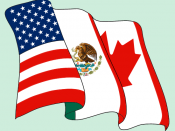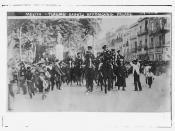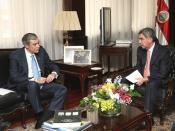In the last twenty years the economy of the capitalist world has been influenced by two trends, one is neoliberalism, an expansion to the laissez-faire economy and the other is globalization, which is defined as the act of extending to other or all parts of the globe in other words to make worldwide. A globalized economy tends to unite geographical areas in order to market products and obtain advantageous prices. Agreements like the DR-CAFTA, the NAFTA, the MERCOSUR, the CARICOM and many others are treaties that promote the development of a globalized economy. Why are these agreements profitable? They are profitable because the greater the amount of goods imported or exported, the cheaper the price. If a group of countries want the same product from one country they ask for a big amount so that the country gives them a cheaper price. The Dominican Republic so far has had limited experience with these types of agreements.
It has been part of CARICOM or Caribbean Community as an observer. Yet, the DR has had experiences with smaller accords that have been negotiated individually with countries such as Venezuela and Mexico. These have dealt with one specific product: oil.
After much negotiation, on August 5, 2004, the Dominican Republic and the United States signed a free trade agreement known as the DR- CAFTA or Dominican Republic-Central America Free Trade Agreement. This agreement includes the Central American countries of Guatemala, El Salvador, Costa Rica, Honduras, and Nicaragua. The agreement is the second largest for the US in America and itÃÂs expected that it will benefit all countries in different areas. However, for the Dominican Republic to be able to enter the agreement and for it to work, the country has to comply with requirements being demanded by the American government. Although major...


